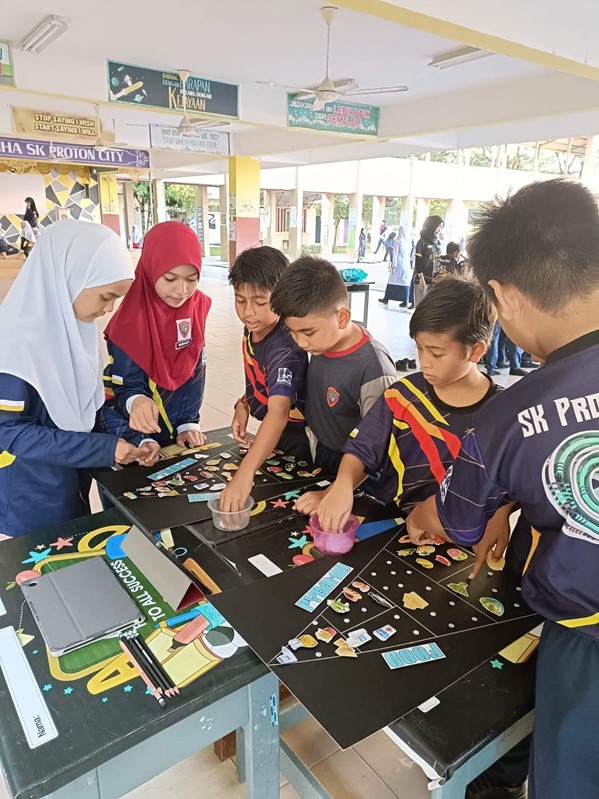Traversing STEM in Parenthood: A Journey with Twins (Part 2)
Read part 1 here.
As the third trimester began, my wife started feeling heavier, and her movements became more restricted. In the 32nd week, she was admitted to the hospital due to unsatisfactory Doppler readings. Doppler is an ultrasound that listens to the baby’s heartbeat in the womb. During her hospital stay, the doctors and nurses played a crucial role in ensuring the well-being of the twin babies until the delivery process. They kept a close eye on contractions and the Doppler readings. Contractions refer to the natural physiological process that assists the mother in giving birth. Specific patterns in contractions indicate that the mother’s body is ready for delivery. However, there are also false contractions, known as Braxton-Hicks contractions, which typically happen early in pregnancy.
Still, my wife’s contractions increased in frequency around the 34th, occurring at 10 to 12 minutes per hour, and the doctor thought the delivery process was approaching. Additionally, there was mucus discharge from my wife’s cervix.
The delivery
On July 27, 2021, at 10 pm, the doctor informed me that my wife needed a Caesarean section because the baby was in a breech position and the baby’s heart rate had dropped below normal. The surgery was necessary to ensure the safety of both the mother and the babies. My wife recounted that at the beginning of the procedure, which began with the injection of anaesthesia, she also remembered seeing a sterile drape placed between her upper and lower body to keep the surgical area clean. Antiseptic fluid was applied to clean her abdomen.
The doctor made incisions in the skin and abdominal wall, followed by a smaller incision in the uterine wall to deliver the baby. She could feel the painless incision after incision, and finally, she heard the incredible sound of newborns filling the room. In that surreal moment, she could still recall the doctors and nurses bustling around, tending to the babies, cutting the umbilical cord and removing the placenta, sutured the uterine and abdominal walls to close the incision. The Caesarean section lasted about 45 minutes.
Our twin daughters were born at 2:00 and 2:03 in the morning, and we express our full gratitude to Allah SWT for their safe arrival. As both of our daughters had no respiratory problems, they were immediately held and kissed by my wife. Due to their lower weight, the nurse wheeled our babies’ cribs to the Special Care Nursery (SCN). Our first daughter weighed 1.9 kg, while our second’s weighed 1.45 kg. She weighed less than 1.5 kg and needed to be placed in the baby incubator.
The baby incubator, a specialised rectangular device with glass panels, serves as the baby cot and port for doctors and nurses to provide intensive care for the baby. It also maintains the baby’s body temperature according to the newborn’s needs. As I walked into the SCN to witness both my children for the first time, tears welled in my eyes, and a surge of overwhelming emotion caught me by surprise, bringing tears to my eyes…. When my wife was allowed to return home without our children a few days later, my heart ached even more.
As I conclude my sharing on this exciting adventure, the journey to parenthood was emotional and demanding and woven with the intricate threads of STEM fields. From the moment we learned about the two lines until the care of our baby in SCN, science guided us informatively through and through. The development of knowledge and innovation of technology in medicine enables us to take the best steps in every phase of the journey.
The field of science was utilised, such as matters related to pregnancy-confirming hormones, medications, and injections required by pregnant women. I’ve become familiar with the relevant scientific terms throughout the pregnancy journey. Technology showed clear images of our little ones through ultrasound scans, capturing important information such as their size and gender. Through the rhythm of contractions and Doppler readings, we witnessed the heartbeat of life.
Undoubtedly, the engineering field contributes significantly to safeguarding every mother’s pregnancy journey. This contribution included the creation of ultrasound machines to monitor fetal development and the baby’s heartbeat and to measure other medical parameters. Even baby incubators are engineered designs. Plus, mathematics is also prominently used in this journey: Naegele’s rule is used to calculate the baby’s gestational age, pregnancy trimesters, the size and weight of the baby, ultrasound results, and many more. On a side note, because my children were born prematurely, their ages are calculated using the corrected age. Their ages were calculated based on their expected due date rather than birth date. Doctors use corrected age to evaluate the growth and development of premature babies.
In conclusion, reflecting on my journey to parenthood, it becomes clear that delving into STEM fields is an incredibly fascinating exploration. In this shared experience, I believe numerous meaningful situations and contexts can be linked to STEM everyday life.
Associate Professor Dr Abdul Halim Abdullah,
School of Education, Universiti Teknologi Malaysia





